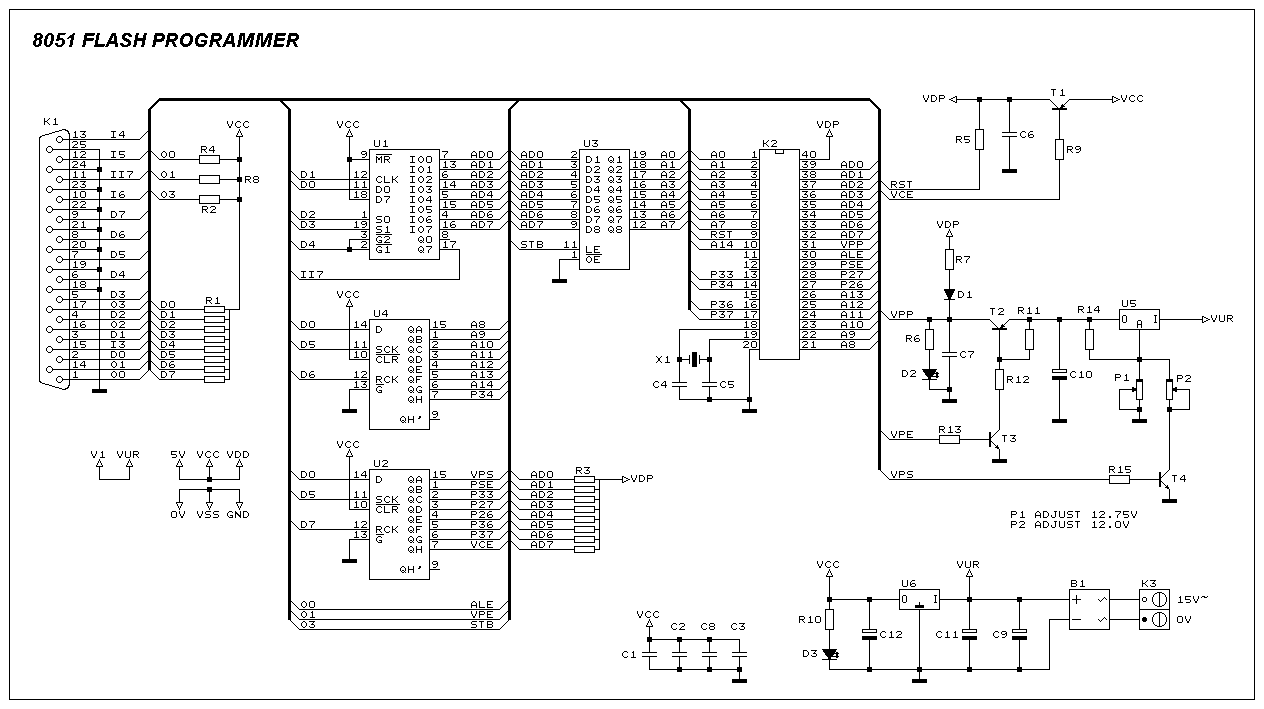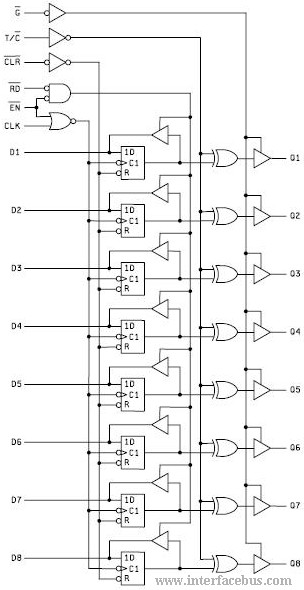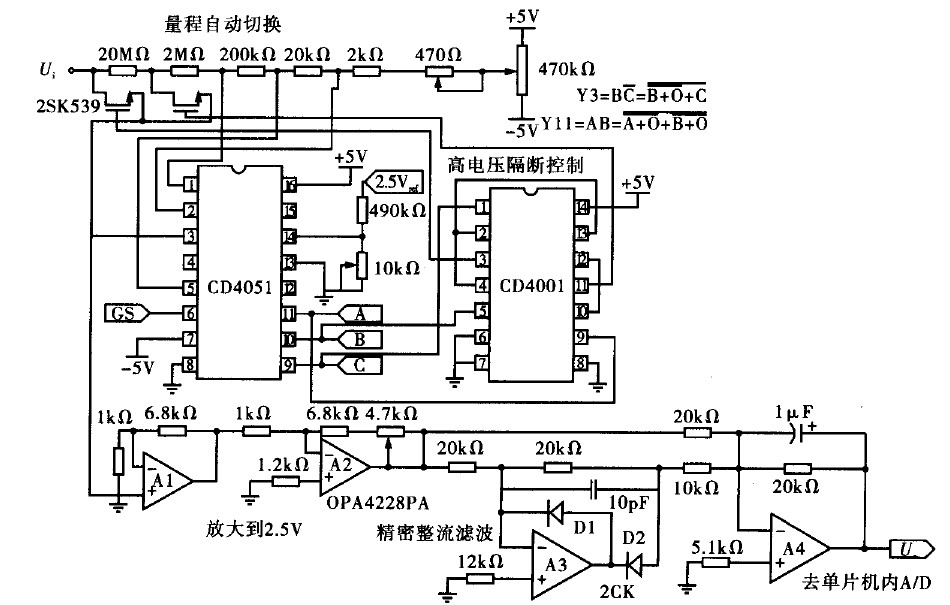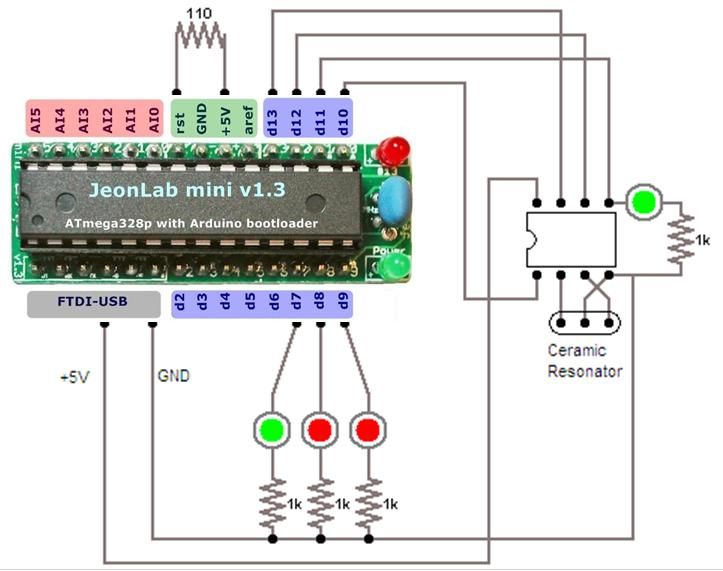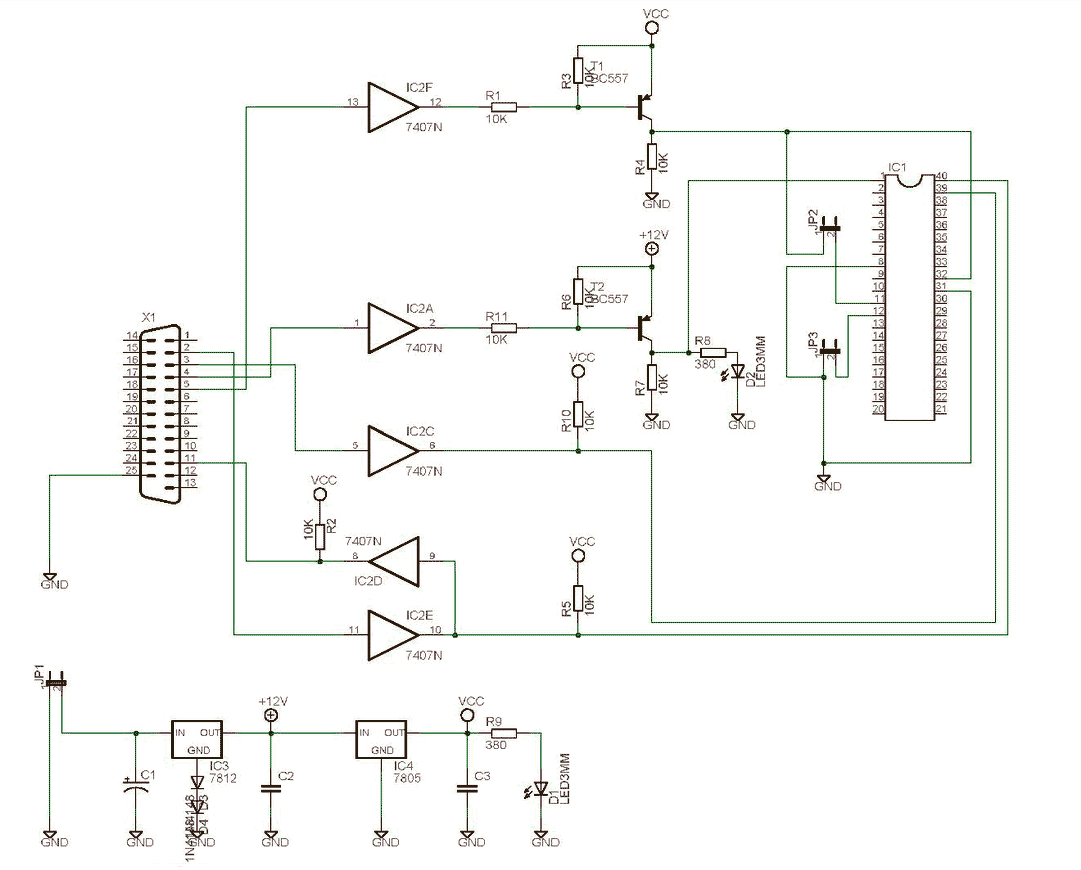
chip programmer
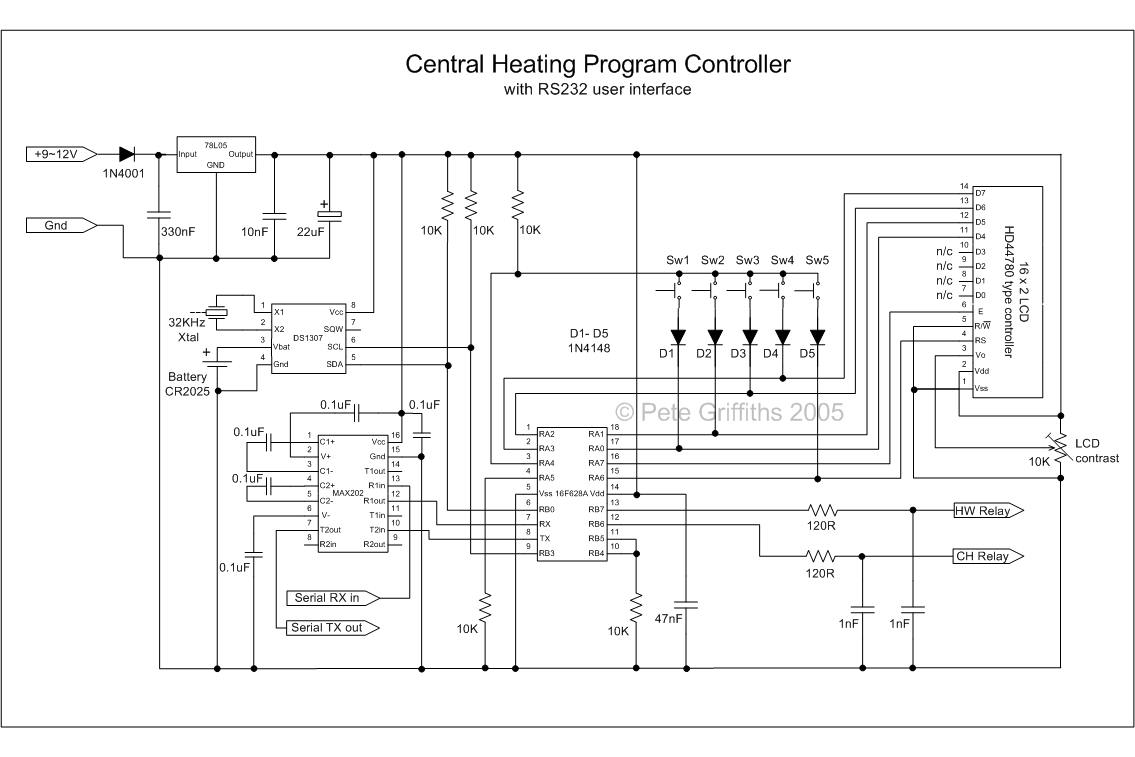
This project originated from the need to control home heating remotely from work. Utilizing a VPN connection between work and home, a relay controlled by a PC was considered the simplest solution. However, a control unit that could be operated directly in the house was also desired. For instance, if the heating is off when waking up late, a simple button press would suffice to turn it on. The programmer described is conveniently located next to the bed, allowing the heating to be activated before getting up and turned off if retiring early, contributing to fuel savings. This programmer is designed for use with a domestic heating boiler, providing outputs through two relays to manage hot water and heating independently. It features 10 programmable entries, allowing manual advancement of heating and water control, as well as the option to disable program control when away from home. In addition to standard front panel controls, the programmer includes a serial terminal interface for remote operation from a PC using a terminal emulator. The programming entries can be configured for weekdays only, weekends only, or every day, but not for individual days. This flexibility classifies it as a 5/2/7-day programmer, although it is referred to as an Enhanced 5/2-day programmer since it accommodates the entire week. The programmer and boiler control relays are housed in separate units, enabling the relays to be positioned close to the boiler while the programmer can be installed anywhere in the house using low-voltage connections to the relay unit. The connection requires six wires for power, serial data, and relay controls, which can be achieved using 6-core alarm cable or CAT5 UTP cabling, as implemented in this case. Alternatively, a single unit can be constructed if preferred. The serial interface can be localized to the programmer, reducing the requirement to four wires for power and relay controls. The programmer remains fully functional using only the front panel, and if the front panel is not needed, complete control can be achieved through the serial interface, allowing for the omission of the LCD and switches. The software is operational, with the system currently integrated into the domestic heating setup. Prototypes have been in use since March 2005, with the latest code, Version 2.0.2, running since May 28, 2005. As of March 25, 2014, it continues to operate reliably, representing the final version of the code with no further developments planned. Maintenance releases will address any reported software bugs or issues. The current relay output and manual mode settings are stored in NVRAM, ensuring restoration after a power failure. However, programmed settings intended for execution during a power outage will not be applied upon restoration. Instead, the settings active at the time of the power failure will be reinstated. During front panel setup mode, no programmed outputs are activated, and any settings that should have been executed while in this mode will not be applied upon exit. Upon power-up, the programmer sends a VT100 [ESC] c command to the terminal to reset it, which may result in the display of extraneous characters.
The electronic schematic for this heating control system consists of several key components. The primary unit, the programmer, is equipped with a microcontroller that processes user input from the front panel and serial interface. This microcontroller is responsible for managing the logic of the heating and hot water control based on the programmed schedule. The programmer interfaces with two relays, each controlling the heating system and hot water supply, respectively. These relays are activated based on the output signals from the microcontroller, allowing for independent control of each function.
Power is supplied to the programmer and relay units through a low-voltage power supply, ensuring safety and compatibility with household wiring. The communication between the programmer and the relay units is established via a six-wire connection, which includes power, ground, serial data, and relay control signals. This configuration allows for flexibility in installation, as the relay unit can be positioned near the boiler, while the programmer can be located in a more accessible area within the home.
The software running on the microcontroller is designed to handle user inputs, manage the heating schedule, and maintain the current state of the system even after power interruptions. The use of NVRAM for storing settings ensures that the system can recover from power failures without losing critical configuration data. The serial terminal interface provides an additional layer of control, allowing for remote adjustments and monitoring from a PC, enhancing the overall user experience.
In summary, the heating control system combines hardware and software components to provide an efficient and user-friendly solution for managing domestic heating and hot water supply, with features that cater to both remote and local operation.This project has come about from my desire to control my home heating from work. As I have a VPN between work and home a straightforward relay controlled from a PC would seem the easiest solution. However I also wanted a control unit that I could operate in the house without resorting to the computer.
For example, I get up late and the heating is off, I just want to hit a button and turn it on. In fact the programmer shown on this page is now next to my bed so I can turn the heating on before I get up late, and also switch it off if I turn in early, which helps save on the fuel bills J This programmer has been designed for use with a domestic heating boiler. It provides outputs via two relays to control the supply of Hot Water and Heating. There are 10 program entries available and each one can control the heating and water independently. The programmer allows manual advance of the heating and water and disabling of program control, useful if you`re going away for a few days and want to leave the heating and water off.
As well as providing normal front panel switch control of the heating and water, the programmer also features a serial terminal interface that allows it to be operated remotely from a PC running a Terminal Emulator. The program entries can be set to switch weekdays only, weekends only or everyday but not individual days.
I believe a programmer that can switch weekdays or weekends is a 5/2-day programmer so I would call mine a 5/2/7 day programmer since it can do the whole week as well. However, a 7-day programmer is one that can do individual days so I`ve settled on calling mine an Enhanced 5/2-day programmer.
The programmer and boiler control relays are contained in separate units so that the relays can be located close to the boiler while the programmer itself can be located anywhere in the house using low voltage connections back to the relay unit. The connection between the programmer and relay unit requires six wires for power, serial data and relay controls making it possible to use 6-core alarm cable or, as I have done, operate it over the CAT5 UTP cabling installed throughout my house.
Of course it`s quite simple to build it as a single unit if that suits the application. There is also no reason why you can`t make the serial interface connection local to the programmer in which case you only need 4 wires for power and relay controls. If you don`t require the remote computer CLI the programmer is fully functional using just the front panel and likewise, if the front panel isn`t required, it can be fully controlled from the serial interface and the LCD and switches omitted from the hardware.
The software is fully functional and the system as described on this web page is currently working with my domestic heating system. I`ve been using prototypes since March 2005. The latest code, Version 2. 0. 2, has been running since 28 May 2005. As of 25 March 2014 it`s still working and has proved to be 100% reliable. This is the final version of the code. I`m not going to develop it any further since the programmer now implements all the features I want and works as I intended.
I will do maintenance code releases to fix any software related bugs / issues reported to me. The current relay output and manual mode settings are stored in NVRAM. In the event of a power failure these are restored when the power resumes. If a programmed setting should have applied at a time during the power outage, it will not get applied when the power is restored. The saved settings that were active at the time of the power failure will be reapplied. When in front panel setup mode, no programmed outputs will be activated. If a programmed setting should have applied while the programmer was in setup mode, it will not get applied on exit.
On power up the programmer sends a VT100 [ESC] c command to the terminal to reset it. This may cause extraneous characters to be displayed or 🔗 External reference
The electronic schematic for this heating control system consists of several key components. The primary unit, the programmer, is equipped with a microcontroller that processes user input from the front panel and serial interface. This microcontroller is responsible for managing the logic of the heating and hot water control based on the programmed schedule. The programmer interfaces with two relays, each controlling the heating system and hot water supply, respectively. These relays are activated based on the output signals from the microcontroller, allowing for independent control of each function.
Power is supplied to the programmer and relay units through a low-voltage power supply, ensuring safety and compatibility with household wiring. The communication between the programmer and the relay units is established via a six-wire connection, which includes power, ground, serial data, and relay control signals. This configuration allows for flexibility in installation, as the relay unit can be positioned near the boiler, while the programmer can be located in a more accessible area within the home.
The software running on the microcontroller is designed to handle user inputs, manage the heating schedule, and maintain the current state of the system even after power interruptions. The use of NVRAM for storing settings ensures that the system can recover from power failures without losing critical configuration data. The serial terminal interface provides an additional layer of control, allowing for remote adjustments and monitoring from a PC, enhancing the overall user experience.
In summary, the heating control system combines hardware and software components to provide an efficient and user-friendly solution for managing domestic heating and hot water supply, with features that cater to both remote and local operation.This project has come about from my desire to control my home heating from work. As I have a VPN between work and home a straightforward relay controlled from a PC would seem the easiest solution. However I also wanted a control unit that I could operate in the house without resorting to the computer.
For example, I get up late and the heating is off, I just want to hit a button and turn it on. In fact the programmer shown on this page is now next to my bed so I can turn the heating on before I get up late, and also switch it off if I turn in early, which helps save on the fuel bills J This programmer has been designed for use with a domestic heating boiler. It provides outputs via two relays to control the supply of Hot Water and Heating. There are 10 program entries available and each one can control the heating and water independently. The programmer allows manual advance of the heating and water and disabling of program control, useful if you`re going away for a few days and want to leave the heating and water off.
As well as providing normal front panel switch control of the heating and water, the programmer also features a serial terminal interface that allows it to be operated remotely from a PC running a Terminal Emulator. The program entries can be set to switch weekdays only, weekends only or everyday but not individual days.
I believe a programmer that can switch weekdays or weekends is a 5/2-day programmer so I would call mine a 5/2/7 day programmer since it can do the whole week as well. However, a 7-day programmer is one that can do individual days so I`ve settled on calling mine an Enhanced 5/2-day programmer.
The programmer and boiler control relays are contained in separate units so that the relays can be located close to the boiler while the programmer itself can be located anywhere in the house using low voltage connections back to the relay unit. The connection between the programmer and relay unit requires six wires for power, serial data and relay controls making it possible to use 6-core alarm cable or, as I have done, operate it over the CAT5 UTP cabling installed throughout my house.
Of course it`s quite simple to build it as a single unit if that suits the application. There is also no reason why you can`t make the serial interface connection local to the programmer in which case you only need 4 wires for power and relay controls. If you don`t require the remote computer CLI the programmer is fully functional using just the front panel and likewise, if the front panel isn`t required, it can be fully controlled from the serial interface and the LCD and switches omitted from the hardware.
The software is fully functional and the system as described on this web page is currently working with my domestic heating system. I`ve been using prototypes since March 2005. The latest code, Version 2. 0. 2, has been running since 28 May 2005. As of 25 March 2014 it`s still working and has proved to be 100% reliable. This is the final version of the code. I`m not going to develop it any further since the programmer now implements all the features I want and works as I intended.
I will do maintenance code releases to fix any software related bugs / issues reported to me. The current relay output and manual mode settings are stored in NVRAM. In the event of a power failure these are restored when the power resumes. If a programmed setting should have applied at a time during the power outage, it will not get applied when the power is restored. The saved settings that were active at the time of the power failure will be reapplied. When in front panel setup mode, no programmed outputs will be activated. If a programmed setting should have applied while the programmer was in setup mode, it will not get applied on exit.
On power up the programmer sends a VT100 [ESC] c command to the terminal to reset it. This may cause extraneous characters to be displayed or 🔗 External reference
